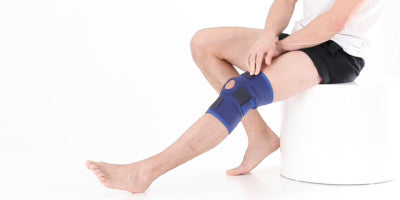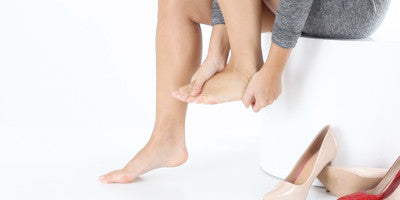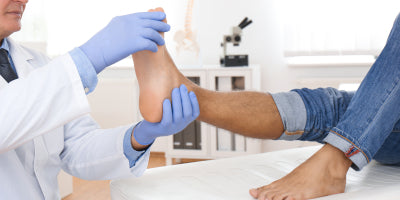What’s the Difference Between a Sprain and a Strain?

Injuries can happen in an instant; whether you’re out for a run, playing sports, or merely stepping off a curb the wrong way. A misstep, an awkward landing, or an unexpected movement can lead to pain and discomfort in ankles, knees, wrists and more. Sprains and strains are among the most common injuries, often confused due to their similar symptoms. However, understanding the difference between the two can help with proper treatment and recovery.
What is a Sprain?
A sprain occurs when the ligaments (tough bands of tissue that connect bones to other bones at a joint) are stretched or torn. This injury commonly affects areas such as the ankles, wrists, and knees. Sprains can range from mild to severe, with symptoms including pain, swelling, bruising, and difficulty moving the affected joint. The severity of a sprain depends on how much damage has been done to the ligament and joint capsule. A good way to identify a sprain is that ligament injuries are often felt in sideways motion.
What is a Strain?
A strain, on the other hand, is an injury to the muscles or tendons, which connect muscles to bones. Strains often occur in the back, hamstrings, or shoulders due to overstretching or excessive force. Common causes include lifting heavy objects improperly, sudden movements, or repetitive motions. Symptoms of a strain include muscle pain, swelling, cramping, and weakness in the affected area.
Injury Grading
Not all sprains and strains are the same—some may cause only mild discomfort, while others can lead to significant pain and loss of function. To help classify the severity of these injuries, medical professionals use a grading system. This system helps guide treatment decisions and gives an estimate of recovery time. Generally, the greater the damage to the ligaments, muscles, or tendons, the more severe the injury. Here’s how they are categorised:
Grading Sprains
- Grade 1 (Mild): A slight overstretch or microscopic tear with minimal pain and swelling but little impact on function.
- Grade 2 (Moderate): A partial tear causing more significant pain, swelling, and difficulty in movement as well as some instability in the joint but with an definite end point in the range of the movement during clinical testing.
- Grade 3 (Severe): A complete tear leading to instability with no firm end point to range during clinical testing, loss of function and extensive swelling. Significant pain may also be present but severe sprains can also be pain free. Medical intervention is often required for this.
Grading Strains
- Grade 1 (Mild): A slight overstretch or microscopic tear to a limited number of fibres with minimal pain and swelling, No decrease in strength of the muscle and full range of movement both active and passive.
- Grade 2 (Moderate): A partial tear effecting nearly half of the fibres causing more significant pain, swelling, and difficulty in movement with a decrease in muscle strength.
- Grade 3 (Severe): A complete tear of the fibres leading to significant pain, instability and difficulty weight bearing for lower limb injuries. Significant visible bruising will usually occur around the site of the injury and medical intervention is usually required.
The PEACE & LOVE Healing Principle
Previously, the standard approach to treating sprains and strains followed the PRICE (Protection, Rest, Ice, Compression, Elevation) method. However, as we discussed in a previous blog, the PEACE & LOVE principle has emerged as a more comprehensive approach. PEACE (Protect, Elevate, Avoid anti-inflammatory drugs, Compress, Educate) focuses on the immediate response, while LOVE (Load, Optimism, Vascularization, Exercise) emphasizes active recovery. Healing time depends on various factors, including the severity of the injury, treatment undertaken, previous injuries, and the age and general health of the individual.
Neo G Airflow Range: A Great Solution
For those recovering from mild sprains and strains, or progressing through recovery from more severe injuries, the Neo G Airflow Range offers excellent support. Airflow knitted supports provide mild support to sprains, strains, and injured, weak or arthritic joints during everyday activities. Made from a specialist breathable fabric and knitted with Multi Zone Compression (MZC), they provide a snug yet flexible fit, helping warm muscles. Lightweight and slimline, they can easily be worn under everyday clothes at work, home or on the field. Tey feature multi-way support, which provides support for sprains and instabilities. Their all-day comfort and everyday protection means they can help reduce the likelihood of injury during occupational and everyday activities.
Understanding the difference between a sprain and a strain is crucial for effective treatment and recovery. While both injuries can be painful and limiting, proper care—guided by the PEACE & LOVE principle—can lead to a smoother healing process. With the right support, such as from the Neo G Airflow Range, you can get back to your daily activities safely and comfortably.










